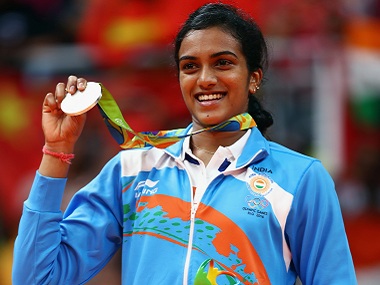By Saumya Tewari In the 2016 Rio Olympics, shuttler PV Sindhu became the first Indian woman to win a silver medal; Sakshi Malik the first Indian female wrestler to win a medal (bronze), gymnast Dipa Karmarkar became the first Indian woman to feature in a gymnastics final, finishing fourth in the vault, and Lalita Babar became the first Indian woman to enter a 3,000 m steeplechase final, finishing 10th. Eighteen-year-old
Aditi Ashok
– the youngest golfer from India – also entered the final round of the women’s individual golf event. Women
saved the day
for India at Rio, and their growing presence was reflected in the 54 female Indian athletes–the largest number ever – at the 31st Olympiad.
Source: Press Information Bureau
India’s maternal mortality ratio – 174, according to World Bank estimates – is worse than countries in the neighbourhood, such as Sri Lanka (30), Bhutan (148) and Cambodia (161). India does worst among the BRICS countries: Russia (25), China (27), Brazil (44), and South Africa (138); according to the World Bank’s latest estimates , which differ somewhat from Indian sources’ 167 but confirm the trends.
Source: World Bank
4. Median age of marriage: Rising, but 61 percent married before 16 The average Indian woman is married at 21.2 years, according to Census 2011 , an improvement from 19.3 years in 1990, according to a government report . The mean female age at marriage in rural areas is 20.7; in urban areas, 22.7, according to the latest census data from 2011. While education is an efficient contraceptive – Indian women with a college degree have 1.9 children during their lifetime, against 3.8 for illiterate woman – it appears to only marginally slow the inevitability of early marriage. Despite a 26 percentage point rise in female literacy over two decades to 2011, it is hard for a woman to stay single beyond 20, as we noted earlier. As many as 80 percent of illiterate children who married before 10 were girls – 5.4 million (44 percent) of married children under 10 were illiterate – indicating how lower levels of education correlate with early marriage. Education also correlates with fewer and healthier children and healthier mothers. Nearly 12 million Indian children were married before the age of 10 years, as IndiaSpend reported in June 2016; 7.84 million (65 percent) married children were female, reinforcing the fact that girls are significantly more disadvantaged. Eight in 10 illiterate children who were married were also girls. Also, as many as 1,403 females never attended any educational institution for every 1,000 males who have not, IndiaSpend reported in November 2015. 5. India’s missing girls: Child sex ratio lowest in 60 years India’s child sex ratio – the number of girls per 1,000 boys aged 0-6 years – is the worst in 60 years, indicating that girls continue to be aborted, killed or otherwise fatally neglected.
Source: Census of India
If India’s child sex ratio does not improve, there will be 23 million fewer women (aged 29-40) than there should be by 2030, according to this United Nations Population Fund projection. Sex selection was introduced in India to control population growth, based on the premise that since girls are hardier, all else being equal, more survive childbirth than boys. In 1975, a paper in the journal Indian Paediatrics argued that this excess of girls was “unnecessary fecundity and that elimination of girls would lead to population control”, wrote Sabu M George – a member of a committee to monitor a 1994 law that banned sex selection – in his February 2016 Indian Express column. But despite the law, rising education levels – and more female role models, such as India’s latest Olympian medallists – the child sex ratio continues to fall. (The author is an analyst with IndiaSpend)
)